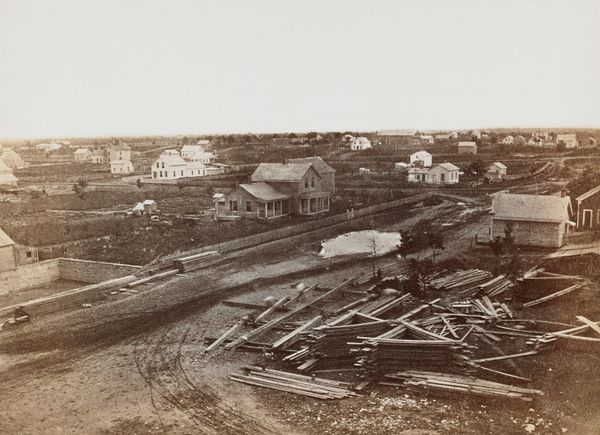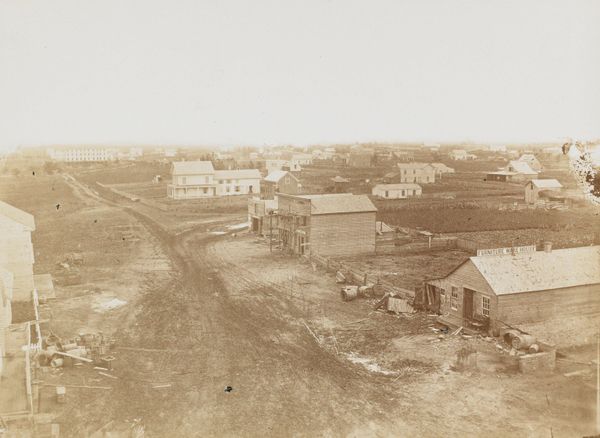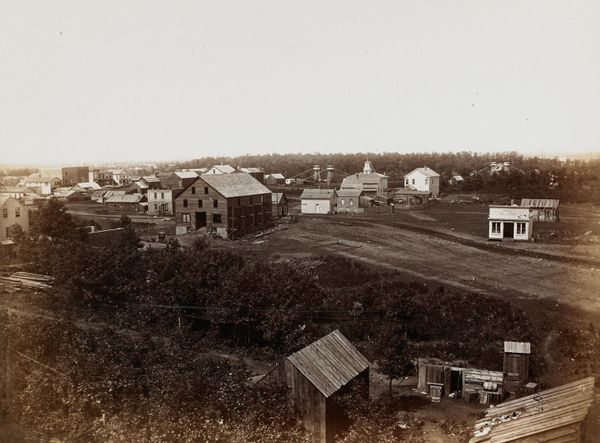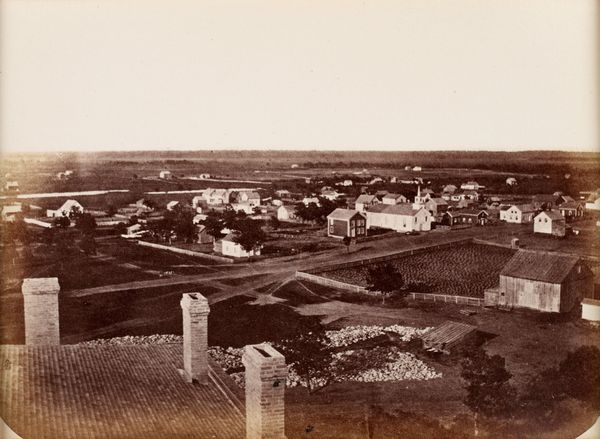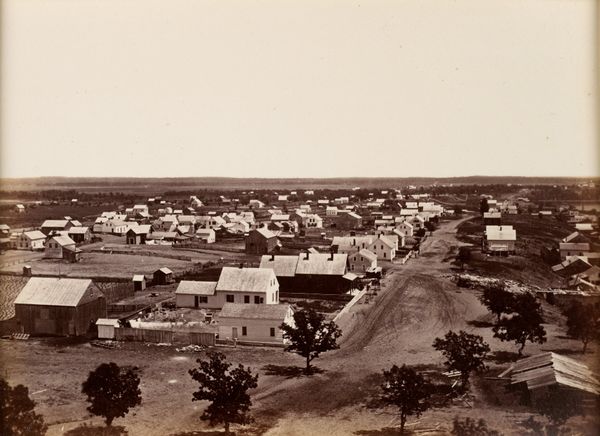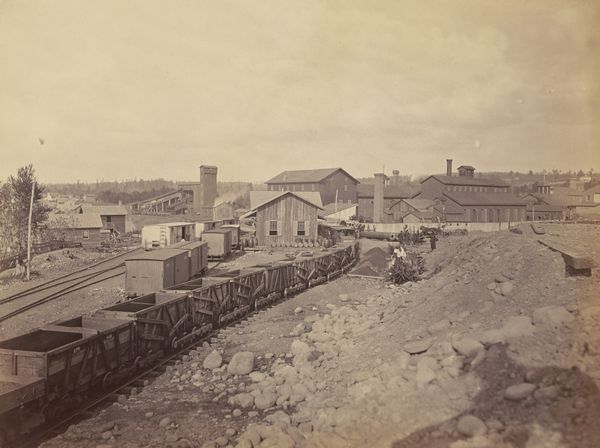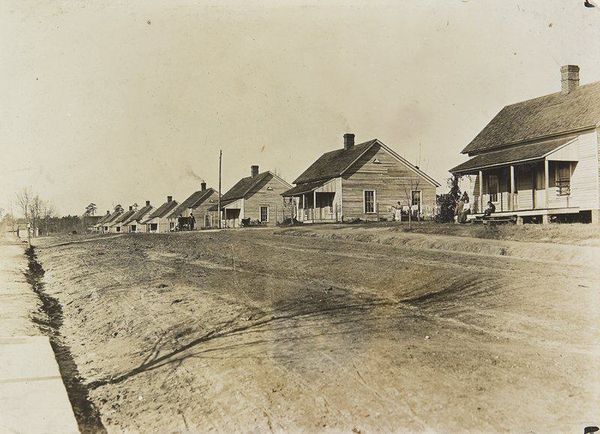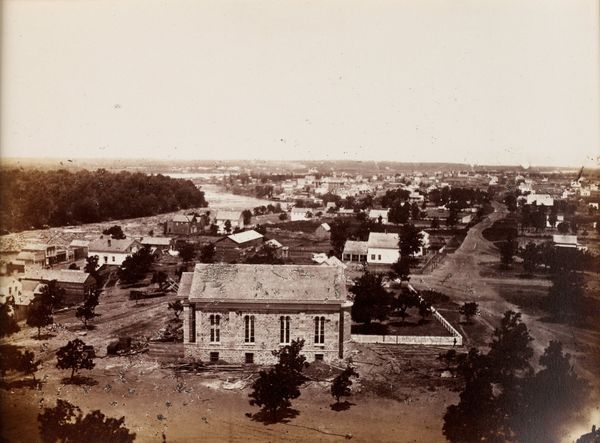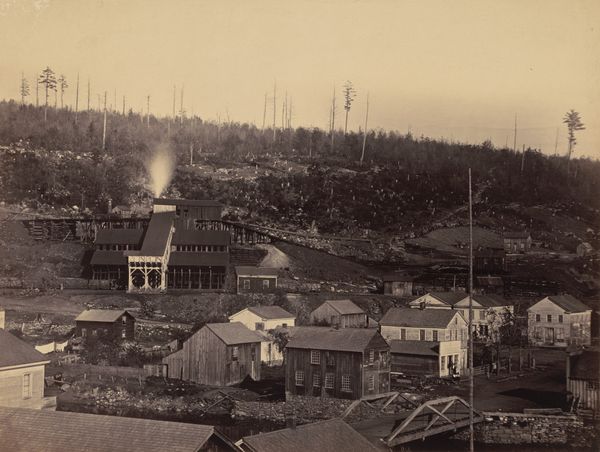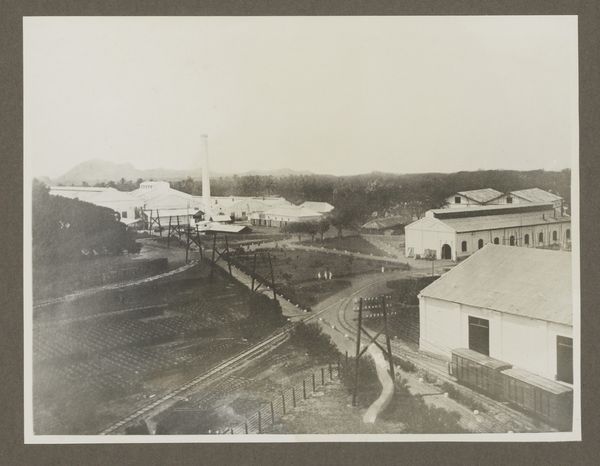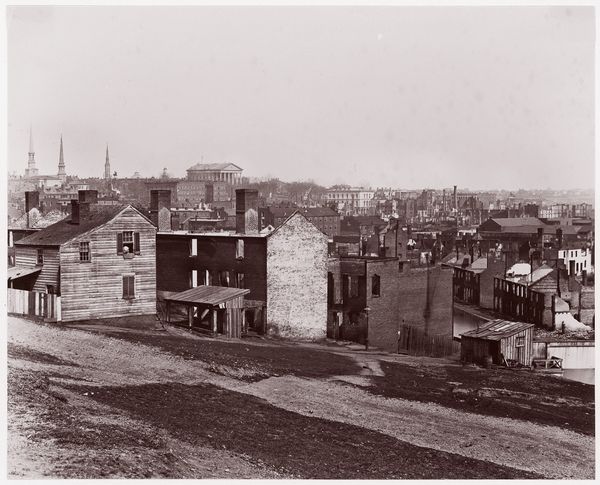
print, photography, gelatin-silver-print
# print
#
landscape
#
photography
#
gelatin-silver-print
#
united-states
#
cityscape
#
realism
Dimensions: 6 3/8 x 8 13/16 in. (16.19 x 22.38 cm) (image)10 x 11 7/8 in. (25.4 x 30.16 cm) (mount)
Copyright: Public Domain
Curator: Benjamin Franklin Upton’s 1857 gelatin silver print, simply titled "Minneapolis," provides a rare glimpse into the early days of the city. The print resides here at the Minneapolis Institute of Art. Editor: My first thought is how raw the settlement feels. The landscape looks almost exposed, the buildings spare, like they’ve barely made an impression on the land. It’s not quite the bustling metropolis one envisions today. Curator: It is striking, isn’t it? It's not unusual to find photographs from this period documenting the built environment, often with the purpose of attracting further investment and development. Think about the context: in 1857, Minneapolis was on the cusp of significant transformation, rapidly transitioning from a frontier settlement. The image becomes a testament to a moment of change, before full-scale industrialization. Editor: That's right, and who would Upton be showcasing this to? What kind of selective truths were they communicating about this new "civilization?" I think the composition speaks volumes—that deliberate placement of the “Minnesota Democrat” building. A lot of messages within messages here...it appears to foreground the importance of business and communication within a burgeoning democratic ideal. Curator: Absolutely, and this touches on Upton’s likely role as a businessman-photographer himself, seeking to contribute to the city's visual identity. Consider how the image emphasizes a vision of progress and expansion. He seems very invested in making a sort of proto chamber-of-commerce portrait of Minneapolis. And although he employs the realism associated with early photography, his emphasis creates an editorial impression, not a perfect representation. Editor: Yes, you’re right. It’s also interesting to think about what's missing or de-emphasized here. Indigenous narratives are completely erased, of course, and even the everyday struggles of settlers feel minimized. But there is this stark visibility that allows us to question how a "democratic ideal" functions in practice. Like, who really has access to it? And at what cost? Curator: I agree. The act of documenting and disseminating these images played a part in shaping the narrative of the West. Understanding this informs how we contextualize landscape photography as something actively shaping ideas of territory and the possibilities afforded by those landscapes. Editor: Exactly, so in many ways Upton gives us more to consider than he probably intended, when trying to show how "new" Minneapolis was in 1857! I look forward to grappling further with the issues around early settlement, expansion, and selective visual storytelling that are prompted by works such as this. Curator: A compelling piece to really delve into those foundational histories we need to be aware of as they relate to today.
Comments
No comments
Be the first to comment and join the conversation on the ultimate creative platform.
